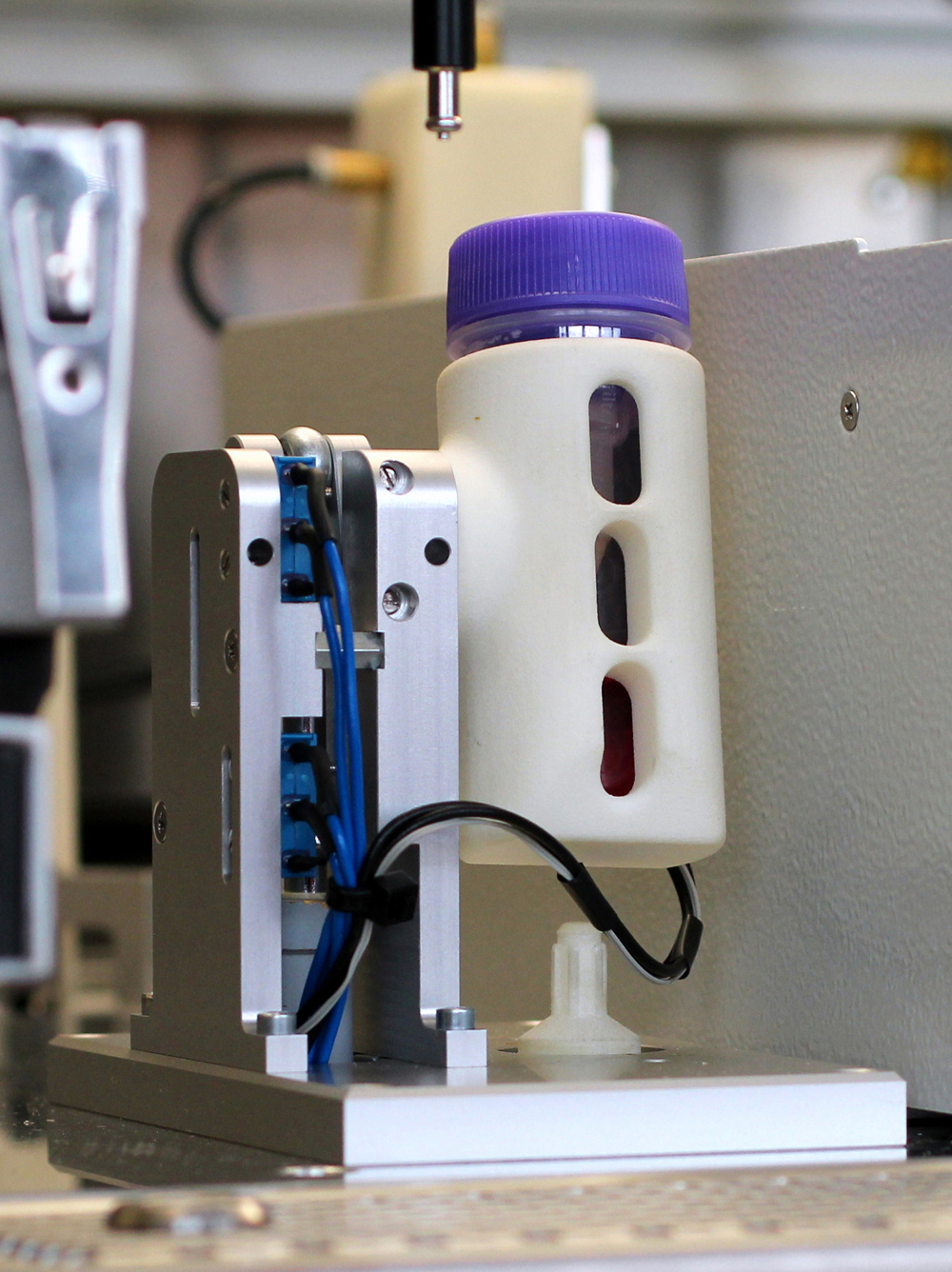A cost-effective way toward personalized cancer drugs
Before a cancer patient embarks on a course of treatment, tests can be carried out to establish whether or not the chosen cytostatic agent combination is likely to be effective. But the time-consuming and expensive nature of traditional testing methods is prohibiting their widespread use. Collaborating with DITABIS Digital Biomedical Imaging Systems AG and scientists from Universitäts-Frauenklinik Tübingen, Fraunhofer researchers have developed a cost-effective, automated system that allows doctors to determine which medications will prove most benefit for each patient. The “DiagnoSYS” system will be on show at BIOTECHNICA 2013 (Booth E09 in Hall 9), which will take place from October 8-10 in Hannover, Germany.
In treating many types of cancer, doctors often use combi-nation of chemotherapy with other treatments. The cytostatic agents used are designed to target faster growing cancer cells. But there is little consistency in how different patients respond to the various treatments: even when dealing with the same type of tumor, there are vast differences in tumor cell reaction to a given treatment. What greatly helps one person may have little effect on another. Thanks to in vitro chemosensitivity testing, it is possible to find the most effective drug for each patient before commencing treatment. The catch is that current methods of testing are extremely expensive and are not covered by standard health insurance plans, meaning that this personalized approach to treating tumors is rarely put into practice.
“Up till now, these tests have mainly been carried out manually,” explains biologist Caroline Siegert from the Fraunhofer Institute for Manufacturing Engineering and Automation IPA. Medical laboratory scientists begin by mechanically disrupting a tumor sample and then use enzymes to generate a single cell suspension. They then culture the cell mixture for seven days in the presence of various different cytostatic agents, allowing them to see which drug proves most effective. “Performing the different stages manually makes this way of testing not only very expensive but also more prone to error,” says Siegert, citing the drawbacks of the method used to date. “Manual cell isolation methods provide a comparatively low sample yield. Moreover, in addition to tumor cells, the samples used for testing tend to contain a variety of other cell types, any of which is capable of affecting the outcome of the test.”
Scientists from Fraunhofer IPA’s Project Group for Automation in Medical Engineering and Bioengineering PAMB decided to tackle this issue. Together with colleagues from Universitäts-Frauenklinik Tübingen and DITABIS Digital Biomedical Imaging Systems AG, they have developed an automated test system which they have dubbed DiagnoSYS. The full title behind the name is Innovative Diagnostic System for Automated Personalized Chemosensitivity Assays.
The system optimizes chemosensitivity tests used to date: the process starts with the automated, mechanical disruption and enzymatic preparation of the tissue sample. The scientists then use magnetic bead activated cell sorting to enrich the yield of tumor cells. This involves equipping antibodies with magnetic particles. These “magnetic” antibodies recognize and bind onto specific structures on the surface of tumor cells, allowing targeted separation of the tumor cells from the rest of the sample. The tumor cells are then cultured together with a variety of cytostatic agents.
The scientists use an ATP luminescence assay in order to evaluate which drugs succeed in killing off cancer cells and which fail. In living cells, ATP (adenosine triphosphate) is a universal energy source. The scientists treat the sample with a luminescent dye, allowing them to use the assay to determine how much ATP is present. The lower the concentration of ATP a sample shows, the more effective the drug.
The process is entirely automated and is carried out under sterile conditions. This increases both the quality and the stability of the assay compared to tests conducted manually. Christian Reis, head of the bioprocess engineering group at Fraunhofer PAMB, outlines the advantages of the process: “In addition to optimizing and standardizing tumor analysis, automation mainly serves to make it cost effective. It will now be possible to deliver the most effective drugs possible, tailored to each individual cancer patient.” And by helping to eliminate ineffectual courses of chemotherapy, the new method can even help drive down healthcare costs.
The system’s modular structure, meaning it can be easily adapted to fit changing require-ments, is yet another advantage. Visit the joint Fraunhofer booth (E09) in Hall 9 at BIOTECHNICA 2013 to discover just how DiagnoSYS works.
